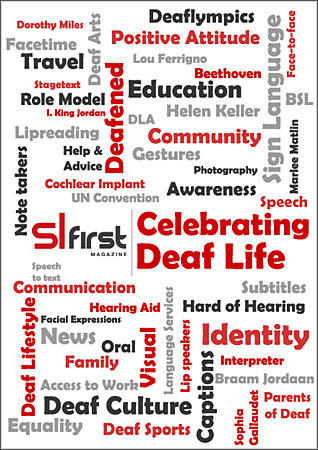Language & Communication22nd May 2018
You Think You Know British Sign Language? Think Again!
Through increased popularity of the beauty and effectiveness of signed language, ignorance rears its sorry head.
How much insult does the Deaf community have to put up with? 15 years on from formal recognition by the British Government, is ignorance of British Sign Language (BSL) at an all time high? Looking around at some comments made about BSL recently, including comments by some people who self proclaim as advocates of the language, you have to come to the conclusion that the level of misunderstanding and misrepresentation is simply staggering. What is clear, is that we have a crisis on our hands, with any Tom, Dick or Harry thinking it’s ok to change BSL signs; to ignore basic rules; to compare it with signed communication tools used in schools; or to influence other people’s thinking based on their own limited knowledge and use of the language.
How many other languages suffer this multi-pronged and sustained attack from outsiders.
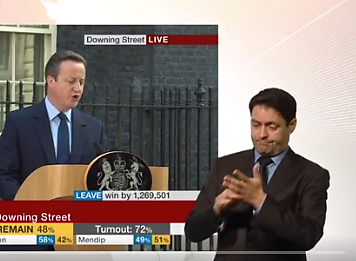 BSL like American Sign Language (ASL) and many other signed languages around the world, can translate anything that is spoken, written or signed. In the same way that translating French into English might reveal that English doesn’t have an exact translation of a French word, hence a few borrowed French words being used in the English language (à la carte, brunette, en route, boutique, for example), BSL might not have a sign for every English word. However, it does have the translation of meaning, even if some of that translation is not just done through signs, but using other aspects of the language such asRole-Shift and Non Manual Features.
BSL like American Sign Language (ASL) and many other signed languages around the world, can translate anything that is spoken, written or signed. In the same way that translating French into English might reveal that English doesn’t have an exact translation of a French word, hence a few borrowed French words being used in the English language (à la carte, brunette, en route, boutique, for example), BSL might not have a sign for every English word. However, it does have the translation of meaning, even if some of that translation is not just done through signs, but using other aspects of the language such asRole-Shift and Non Manual Features.
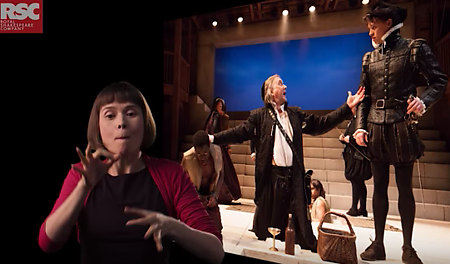 Observations that BSL is somehow limited in its translation of English is more a reflection on the commentator and their grasp of all aspects of BSL, not an accurate reflection on BSL itself, regardless of how much veracity is put behind their argument.
Observations that BSL is somehow limited in its translation of English is more a reflection on the commentator and their grasp of all aspects of BSL, not an accurate reflection on BSL itself, regardless of how much veracity is put behind their argument.
It is sad to see so many of these ‘BSL is limited’ comments coming from people working in support of Deaf children and adults, people who give their opinion on BSL even though, according to publications on this issue, most are at the GCSE level of their BSL learning, if indeed they have actually studied the language formally at all. It is even more depressing to see people trying to compare BSL with signed communication tools that have been developed primarily for use in an educational setting to support the development of speech or language.
 Whether referencing Signed Supported English (SSE), Makaton, Paget Gorman, Signalong, Cued Speech, or any other machination of signed communication, the gulf in grammar, sentence structure, nuance and expression with BSL is so great that it makes any comparison meaningless.
Whether referencing Signed Supported English (SSE), Makaton, Paget Gorman, Signalong, Cued Speech, or any other machination of signed communication, the gulf in grammar, sentence structure, nuance and expression with BSL is so great that it makes any comparison meaningless.
It has been interesting to see the rise in popularity of the use of some of these communication tools in the arts, with the hearing community seeming to love them. It is through the Deaf community and enlightened BSL learners pointing out that most songs labelled as BSL translated, are not, that a further attack on BSL has developed. Quite often these challenges are met with comments suggesting the Deaf community should be grateful that at least people are trying to learn their language.
For those who think the lyrics of songs can’t be properly and effectively translated into a formal signed language like BSL, just look at the American National Anthem being translated into ASL at the Super Bowl each year. It is so much more meaningful than if it was simply translated using ‘Sign Supported American’, with hours and hours of preparation and practice going into the accurate translation of meaning.

Most ‘signed songs’ use SSE with the performance usually having little connection to the true meaning of the lyrics. It is a lie to claim that such videos are signed translations or interpretations. By design, they limit English, and the true meaning behind the words used. The song, ‘I’m dreaming of a white Christmas’, invariably signed using the colour white, misses a huge opportunity for children to visualise the snow falling and the beauty it creates on the ground, in the trees, and on rooftops. Signed using BSL by an experienced translator, the performance links far better to the visual and creative minds of children, showing emotion, feeling and wonderment, not just the sign for the colour white!


Hopefully, as is the case in America, more and more Deaf people will receive the support they need to enter the arts, when we might then also get more wonderfully performed BSL translations of songs, poems, stories, plays and more. That is what the Deaf community wants. We don’t have learning difficulties, we just see things visually. Most probably, unlike the many hearing people who do signed songs, Deaf performers wouldn’t do it for purposes of profiteering or self promotion, they would do it to showcase the beauty and vibrancy of our language.
Signed communication tools like SSE and Makaton are casting a shadow over the proper learning of BSL. BSL teachers involved in teaching BSL to Teachers, Teaching Assistants and Communication Support Workers working with Deaf children, tell us frequently that they are told they can’t use certain signs in school, all because the hand-shape used is similar to a rude gesture. Learning, boiling, lazy, and many more signs, are often banished from a Deaf child’s learning of BSL through political correctness. Never once does the voice behind that political correctness stop to contemplate the insult and offence caused to the Deaf community. Never do they consider that they are insinuating that if Deaf people use those signs, they are being rude or offensive. Political correctness just in one direction, with offence to the Deaf community being fair game it seems.
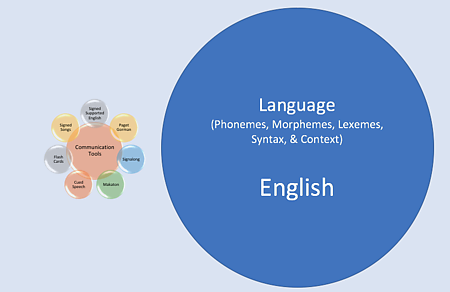 Using this same interpretation of language, maybe we need to get rid of English words such as duck, suck, buck, luck, because they are similar to a swear word. It is such an infantile and narrow perspective of language. And yet these are decisions made by some of our leaders in education.
Using this same interpretation of language, maybe we need to get rid of English words such as duck, suck, buck, luck, because they are similar to a swear word. It is such an infantile and narrow perspective of language. And yet these are decisions made by some of our leaders in education.

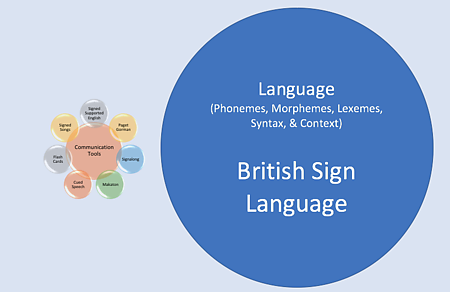 Arguably, BSL has never been more in the spotlight than it is right now, but with its popularity comes a range of threats if all and sundry are able to put themselves forward as its spokesperson. It is a time for strong and dynamic BSL leadership, with Deaf people who really know and understand the language leading on national debates. We don’t need hearing people to talk for us, we just need true empowerment, so that we can address policy and law makers ourselves.
Arguably, BSL has never been more in the spotlight than it is right now, but with its popularity comes a range of threats if all and sundry are able to put themselves forward as its spokesperson. It is a time for strong and dynamic BSL leadership, with Deaf people who really know and understand the language leading on national debates. We don’t need hearing people to talk for us, we just need true empowerment, so that we can address policy and law makers ourselves.
Article by SLFirst Education Team
posted in Community / Language & Communication
22nd May 2018


